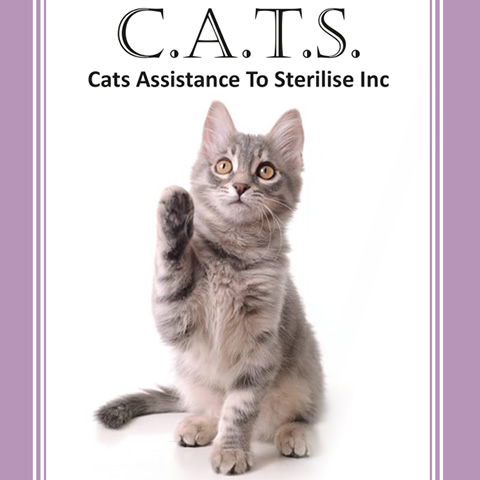C.A.T.S. advocates humane methods, already proved successful in reducing cat numbers and cat-related problems.
Humane cat control
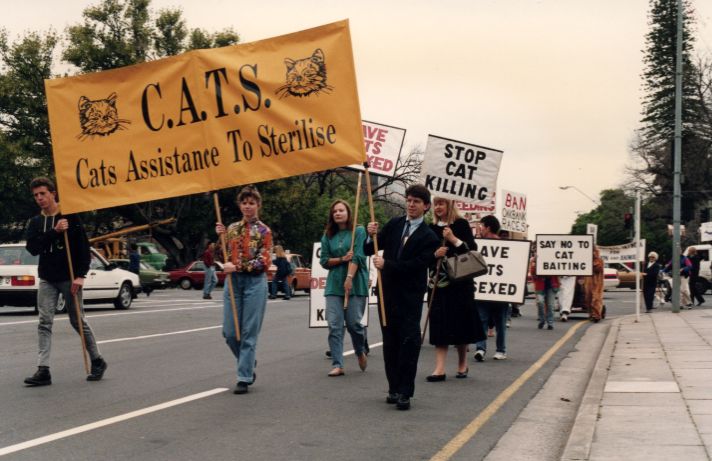
Desex-and-return is an effective strategy
C.A.T.S. supports the desex-and-return policy for management of free-roaming cats. This involves humanely trapping the animals, who are then examined by a vet and desexed, before being returned to their original territory once they have recovered. Volunteers regularly feed the cats, monitor them for illness, and trap any undesexed immigrants that join the group. It is important to realise that these are managedcolonies.
The Universities Federation for Animal Welfare (UFAW) in the U.K. has also adopted desex-and-return as its policy on feral cat control (1): “UFAW considers that population control by neutering is a humane method of dealing with groups of feral cats. It has been shown that schemes based on trapping, neutering, marking by ear-tipping and returning to managed sites can be effective in the long run.”
In the US, the American Association of Feline Practitioners has said (2): “The AAFP supports appropriately managed cat colonies. Humane alternatives to the destruction of healthy cats for animal control purposes should be actively pursued by veterinary, humane and wildlife organisations. Such alternatives include increased sterilisation and humane education.”
Italy has had a no-kill policy (trap-neuter-return) for community cats since 1991, based on the following rationale (3): “TNR programs are considered the most practical, effective and humane way for controlling free-roaming cats because they are intended to decrease reproduction without causing harm to the cats. Moreover, only TNR programs encounter the approval and, thus, the cooperation of cat care-takers.”
Why killing doesn’t work
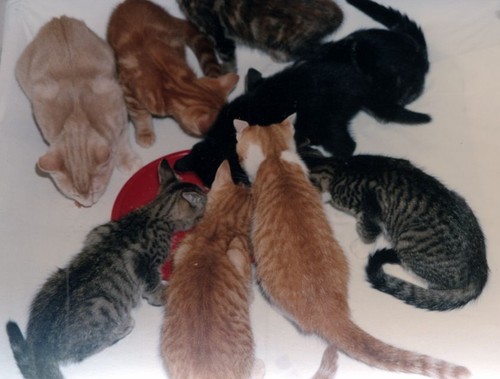
Some cat management authorities imagine that trapping and destroying free-roaming cats will remove any cat-related problems. This method does not work, for several reasons:
- The remaining cats will breed more successfully;
- Other cats will move into the vacant territory;
- Residents who oppose killing healthy cats will sabotage the scheme.
- Vacant territories are quickly occupied
All animal populations are controlled by the resources available in their territory. If a population becomes too large for its food supply, the death rate will increase and the population will be reduced. So, if free-roaming cats are trapped and removed, more resources will be available for other cats, either kittens produced by the remaining felines or new cats moving into the territory.
UFAW has clearly explained why removing cats doesn’t work (1):
“Total eradication of a colony is difficult, labour intensive, time-consuming and therefore expensive. Almost inevitably a few cats will avoid capture. Unless food sources are strictly controlled these survivors wil reproduce and re-form the colony. Even if eradication has been successful there is always a risk that other straying cats will move in if shelter and food is there to attract them. The food may be wild rodents or unsecured waste bins, or there may be cat feeders unknown to the owner of the land. Every site may be considered to have a carrying capacity for cats which will depend on food supplies and availability of shelter. If cats are there and can breed, the population will tend to increase to fill that capacity.”
The food supply is almost impossible to control. A study of free-roaming cats in urban Baltimore USA concluded that food was easily available and hunting played only a minor role in their diet. Analysis of scats and a door-to-door survey of 430 households showed that these cats survived mainly on food either provided directly by humans or indirectly via garbage. The same results were also found in 4 other studies in the US, UK and Italy (4). What this means is:
- free-roaming cats are not a danger to wildlife as claimed by some people;
- there is plenty of food for colonies to re-form if cats are removed.
- Trapping and removing has effects opposite to those intended.
There is more food available for kittens. “… trapping and disposal programs may in fact increase the survivability of kittens born into such colonies by increasing the number of vacancies in the ecologic niche.” (5).
There are not enough cats left to defend the territory. New cats move in, the colony is unstable, and behaviour problems worsen. “… the repeated influx of new cats into the colony increases territorial and hierarchic fighting, increases the probability that new diseases will be introduced into the colony and generally exacerbates the very behavioural patterns for which feral cats are usualy labelled a nuisance. If population numbers could be stabilised and turnover could be reduced, territorial behaviour within the colony would discourage migration into the colony from outside, resulting in a group of cats that should be healthier, quieter, and more acceptable to their human neighbours.”(5).
Any scheme based on trapping and removing cats has to be repeated about every 6 months, without actually solving the problem for cats or humans. (6)
“The high population of stray, lost or abandoned cats in urban areas soon moves in to fill the vacuum left by those destroyed and recolonizes the vacant area, at the same time refilling it with the associated feline problems. Need for control is then required once again. In London this vacuum-filling process seems to take 3-6 months, depending on the time of year.”
Humans form a bond with cats

Large numbers of people feed free-roaming cats and have a bond with them, even if the cats are too wild to approach. In the US, various studies have found that between 9% and 22% of households feed such cats (7). The reasons given by the majority include sympathy, affection or a sense of responsibility for hungry animals (8).So, it is not surprising that when lethal methods are used to remove cats “… public sympathy is invariably in favour of the feral cat, because he appears identical to his pet counterpart. Strong protective emotions are aroused in most animal lovers …” (6).
Lethal methods lead to public opposition and sabotage of programs. One example of sabotage occurred when cats were trapped and removed from hospital grounds in Louisiana:
“The patients’ long-standing practice of feeding leftover food to the cats was discouraged by issuing regulations against removing food from the cafeteria, but these regulations were consistently ignored or circumvented by the patients. In addition, cats that were caught in traps were frequently released by the patients. Even so, several cats were successfully removed from the colony every year, but a noticeable reduction in overall numbers was never achieved.” (5)
The same happened on the campus of the University of Central Florida:
“Attempts to control populations by removal of cats are often met with opposition and sabotage by cat feeders who have formed an attachment to the cats; in our study, employees and students openly violated policies against feeding the cats and interfered with trapping efforts by university officials during removal campaigns. In contrast, programs that control the population and improve the well-being of cats via neutering frequently have the support of cat feeders who may be recruited to assist with trapping and management.” (7)
At both these institutions, authorities now use a desex-and-return program to stabilise cat numbers and minimise cat-related problems. The patients and students support and cooperate with this program rather than trying to sabotage it. “Engaging cat feeders in solutions for feral cats will undoubtedly be more productive and economical than warring against them.” (9)
To summarise why removing and killing free-roaming cats is a bad approach:
- It doesn’t reduce cat numbers in the long-term and has to be repeated every 6 or or 12 months. This increases the costs.
- It arouses public antagonism and leads to sabotage of schemes.
- It produces unstable colonies with a high turnover of cats, and consequently a lot of fighting and other behaviour that humans find objectionable.
- It is not humane. As US veterinarian Dr Rick Wulff has said: “I do not understand how it can be said that euthanasia is a humane solution. Although it can be done humanely, I don’t see it as a humane act for a healthy cat.” (10)
Examples of desex and return
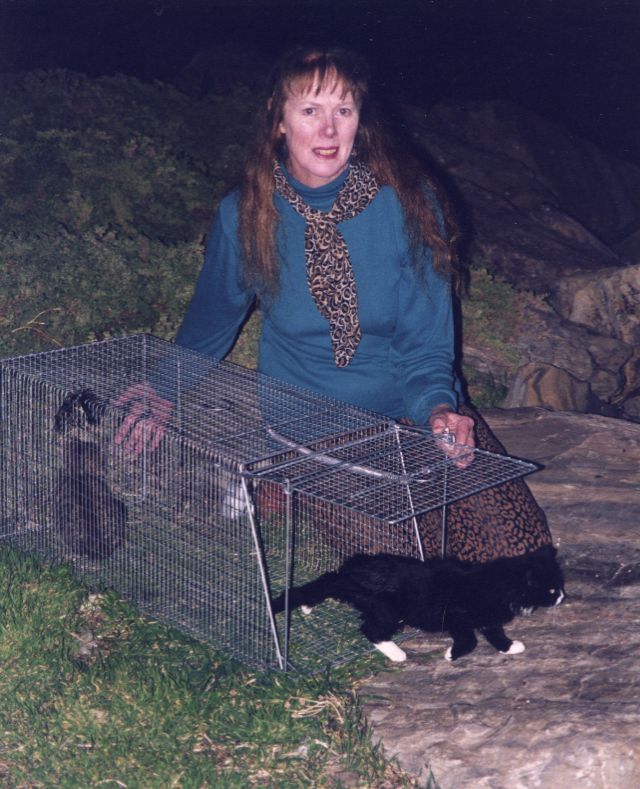
A number of London boroughs have adopted the desex-and-return approach, as have many other authorities worldwide:
“… neutering has proved extremely successful both at managing feral cat populations and their associated behaviour problems without the distress of killing an animal which is acceptable and often encouraged by many people. Indeed the continued presence of a stable healthy colony affords great social and sociological benefit tomany in our urban communities. Cat neutering schemes have been set up and are being maintained successfully in urban areas worldwide and in tourist resorts in countries are culturally diverse as Kenya, Greece, USA, Tunesia, South Africa and Israel.” (6)
The Animal Control Service in Orange County, Florida, adopted a desex-and-return programme in 1989. In the 6 years after that time, a similar number of cats were impounded to the 6 years before, but fewer were euthanased and fewer complaints were received. Impoundments were stable in spite of the fact that the human population of the county increased by 32% and the cat population by 27% between 1990 and 2000 (11).
In a housing estate in Battersea, UK, a colony remained stable at around 20 cats over a 5 year period. Only 1 litter was born in that time (6).
On the large grounds of a hospital in Louisiana, 40 cats were desexed and returned. Three years later, 30 of the original cats were located. There were no new kittens, but there were 6 new adult cats, presumed to have been dumped in the fairly isolated location of the hospital (5).
The Texas A&M University began a desex-and-return program on campus in 1998. In the first year 123 cats were trapped, compared to 23 in the second. Kittens and tame cats were adopted, and 101 desexed cats were returned. Complaints decreased, and only 3 kittens were found in the second year. Since they were not litter mates, they were presumably dumped (12).
The University of Central Florida began desexing and cataloguing cats on campus in 1991. Initially 155 cats were trapped. Kittens and tame cats were adopted, while healthy desexed cats were returned. By 1996 there were 68 cats, and be 2002 there were 23. Of the cats present in 2002, 83% had been on the campus for longer than 6 years, so it was a very stable group (7).
Law 281 (1991) in Italy is based on the following crucial points:
“Feral cats have the right to live free; they are protected and cannot be removed from their colony.
Feral cats have to be surgically neutered by the local Veterinary Public Services (VPS) and reintroduced to their colony.
Cat care-takers (also known as ‘cat-lovers’) have become an institutionalised figure. Colony care-takers are gathered in associations; they can have the official assignment of the management of a cat colony if the local VPS and the office for the animal welfare agree.”
As a result of this desex and return policy, cat numbers in 103 registered colonies in Rome decreased by 22% up to the year 2000 (2).
Maximising policy effectiveness

These examples demonstrate that desex-and-return programmes produce stable to slowly declining populations, healthier cats, and fewer behaviour problems and complaints.
However, there are a few cases where these results have not been obtained. For example, in a Florida park the population increased from 81 to 88 in the first year. Although the original population of 81 decreased by 20%, the sight of well-fed colonies encourage irresponsible people to dump their cats (7).
In Italy also, owned-cat abandonment threatens the excellent results of desexing (2).
Therefore:
- The location of colonies should not be publicised and feeding stations should not be easily visible to the public to discourage dumping of owned cats.
- Food supply should be restricted so that the colony keeps out intruders. “Neutered groups of cats will defend resources of food and possibly shelter in their territory and deter immigrants, provided some level of the need to compete is maintained by providing only enough food for the colony and no more. “ (6)
There are also more general problems, namely that members of the public are reluctant to take unwanted cats to shelters, knowing that they will probably be destroyed, and not wanting to pay high fees for desexing of owned cats. Stopping the continued abandonment of owned cats is still a challenge and requires a multi-pronged attack (9):
“The high rate of destruction of cats admitted to animal shelters may prevent some cat owners from choosing relinquishment to shelters in favour of release to colonies, in the misguided attempt to ‘give the cat a chance’. Public education promoting responsible pet ownership, increased and earlier sterilisation, improved pet retention programs, and expansion of no-kill animal sheltering should be promoted to reduce pet abandonment.”
Assistance to desex owned cats would also be helpful in stabilising colony populations (13).
“Low-cost spay neuter programs for owned cats would compliment free-roaming cat management by reducing the probability that owned cats will serve as source populations, thus negating control attempts.”
Community benefits of desex and return
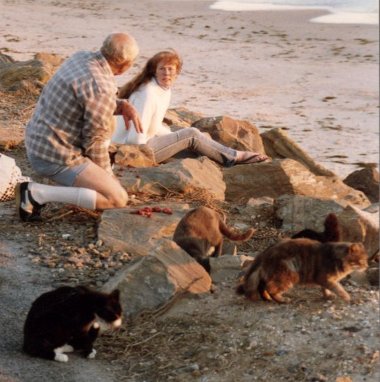
Summary of advantages of desex and return:
- better long-term population control
- greater cost effectiveness
- minimal cat behaviour problems
- increased cooperation between residents and cat management authorities
- satisfaction for cat carers
- improved cat health
As demonstrated in the previous sections, desex-and-return provides better population control than cycles of killing:
“Colonies remain stable over many years provided the occasional successful immigrant is trapped and neutered … before it breeds. Hence a properly supervised neutered colony can provide better long-term control of cat problems compared with repeated culling of an ever-reforming colony.” (6)
This result is achieved at lower cost to the community. For example, Orange County in Florida calculated that it cost $83 per cat less to desex and return than to impound, hold for the required 5 days, and then euthanase. Over a 10 year period, the county saved over $650,000 as a result of desex and return (11).
Research by UFAW in London showed that in the first year of operation, desex and return was more expensive than trap and destroy. However, because maintenance costs after the first year were minimal, only desexing the occasional immigrant, desex and return became cost effective after 1-2 years (1). In contrast, trap and destroy costs continue indefinitely.
Desexing and the existence of stable colonies alters cat behaviour and minimises problems:
“Neutering the toms will reduce spraying, fighting and caterwauling, and stop the pungent smell of tomcat urine. Neutering the females will stop the production of kittens. The group will remain together, particularly if based on a family, and only unneutered toms will tend to wander away … It has been found that cats in a neutered group show less aggression and more affection towards each other. They also become more tame and more friendly towards the feeders, thus giving the feeders more satisfaction in their task.” (1)
When authorities adopt a heavy-handed approach and destroy cats, they cause ill-will and distress in the community. The desex-and-return programme, on the other hand, is based on cooperation and positive interactions between residents and authorities:
“Through community involvement, the program allows the county’s animal service employees and citizens concerned about the cats’ welfare to view each other with a new perspective and understanding rather than as adversaries … The establishment of the feral cat program was done without a change in the county code through the persistence and teawork of concerned citizens and county officials. Thus, the Orange County program is a testament to the ability of communities to effectively approach their companion animal overpopulation problems through a collaborative effort among the citizens, government, and volunteer organisations to promote increased animal welfare.” (11)
Caring for cat colonies can be particularly beneficial for people in institutions, as for example in the case of the hospital in Louisiana:
“The positive effect of pets on institutionalised people is well established, but the keeping of pets if often impractical in an institutional setting. Many of the patients at GWLHDC have long regarded the cats as pets, and feeding and watching the cats is a regular daily ritual with many of the patients.” (5)
The same can also apply to elderly people in residential care:
“Caring for free-roaming cats can be of psychologic benefit for lonely elderly adults, because it allows them to perform meaningful tasks, provides an outlet for affection, gets them outdoors, helps prevent depression, reduces social isolation, and provides companionship and the opportunity to nurture.” (4)
In a more general survey in Hawaii, benefits to carers included the opportunity for nurturing and enhanced feelings of self-esteem (8).
Finally, cats benefit from being able to live out their lives in a stable social group and from being healthier as a result. Everyone benefits!
Health of cats in colonies

Community cats in managed colonies are remarkably healthy. Of 5323 cats neutered in a US TNR program, only 0.4% were euthanased due to ill-health (14). Feline leukemia virus (FeLV) and feline immunodeficiency virus (FIV) are serious infectious diseases, but infection rates in many hundreds of cats presented for TNR were in the range 3-5%, equivalent to owned cats (15,16). Since FIV can be spread through bites, especially during territorial fights between males, and FeLV can be spread through mother’s milk (16), rates of infection among community cats will be even lower once they are desexed. Community cats were lean but not emaciated, and their weight and body condition improved after desexing (17).
Therefore, disease or ill-health is not a reason for summarily killing community cats (9).
“Although TNR may not meet the gold standard of care desired for pet cats, it appears that sterilised feral cats can enjoy an extended period of good quality life while their population dwindles by adoption or natural attrition. As such, it is not necessary to perform prophylactic euthanasia of feral cats simply because they do not share a human address.”
References
- Universities Federation for Animal Welfare (1995). Feral Cats: Suggestions for Control (3rd ed.). UFAW, South Mimms
- Richards J (2004). The 2004 American Association of Feline Practitioners position statement on free-roaming abandoned and feral cats. Journal of Feline Medicine and Surgery, 6: vii-ix
- Natoli E, Maragliano L, Cariola G, Faini A, Bonanni R, Cafazzo S & Fantini C (2006). Management of feral domestic cats in the urban environment of Rome (Italy). Preventive Veterinary Medicine, 77: 180-185
- Patronek, G. (1998). Free-roaming and feral cats: their impact on wildlife and human beings. Journal of the American Veterinary Medicine Association, 212: 218-226
- Zaunbrecher, K. & Smith, R. (1993). Neutering of feral cats as an alternative to eradication programs. Journal of the American Veterinary Medicine Association, 203: 449-452
- Neville, P. (1989). Feral cats: management of urban populations and pest problems by neutering. In R. Putnam, Mammals as Pests. Chapman and Hall: London
- Levy, J., Gale, D. & Gale, L. (2003). Evaluation of a long-term trap-neuter-return and adoption program on a free-roaming cat population. Journal of the American Veterinary Medicine Association, 222: 42-46
- Centonze, L. & Levy, J. (2002). Characteristics of free-roaming cats and their caretakers. Journal of the American Veterinary Medicine Association, 220: 1627-1633
- Levy J & Crawford P (2004). Humane strategies for controlling cat populations. Journal of the American Veterinary Medical Association, 225: 1354-1360
- Wulff, R. (2003). Additional input on feral cat debate: Dr Wulff responds. Journal of the American Veterinary Medicine Association, 223: 1730
- Hughes, K., Slater, M. & Haller, L. (2002). The effects of implementing a feral cat spay/neuter program in a Florida county animal control service. Journal of Applied Animal Welfare Science, 5: 285-298
- Hughes, K. & Slater, M. (2002). Implementation of a feral cat management program on a university campus. Journal of Applied Animal Welfare Science, 5: 15-27
- Schmidt P, Swannack T, Lopez R & Slater M (2009). Evaluation of euthanasia and trap-neuter-return (TNR) programs in managing free-roaming cat populations. Wildlife Research, 36: 117-125
- Scott K, Levy J & Crawford P (2002). Characteristics of free-roaming cats evaluated in a trap-neuter-return program. Journal of the American Veterinary Medical Association, 221: 1136-1138
- Lee I, Levy J, Gorman S, Crawford P & Slater M (2002). Prevalence of feline leukemia virus infection and serum antibodies against feline immunodeficiency virus in unowned free-roaming cats. Journal of the American Veterinary Medical Association, 220: 620-622
- Luria B, Levy J, Lappin M, Breitschwerdt E, Legendre A, Hernandez J, Gorman S & Lee I (2004). Prevalence of infectious deseases in feral cats in Northern Florida. Journal of Feline Medicine and Surgery, 6: 287-296
- Scott K, Levy J, Gorman S & Newell S (2002). Body condition of feral cats and the effect of neutering. Journal of Applied Animal Welfare Science, 5: 203-213
